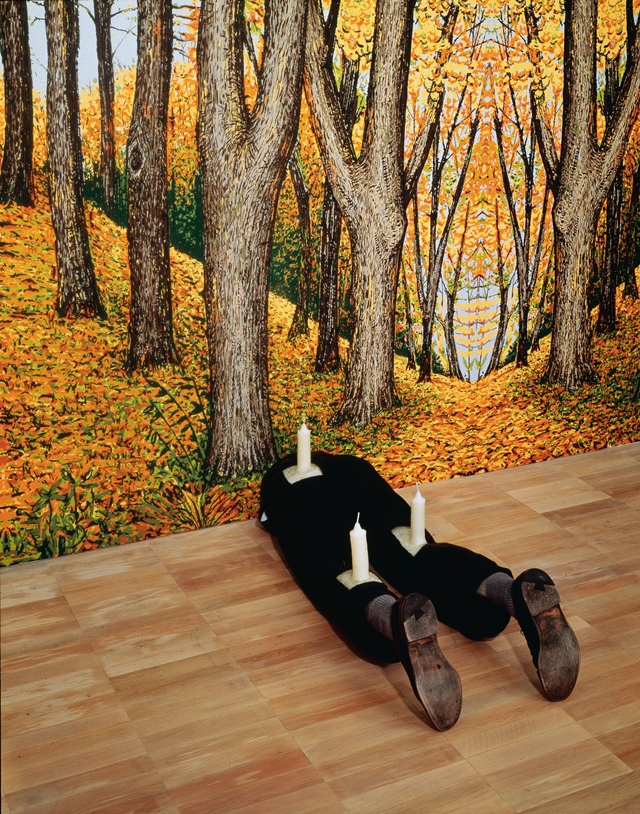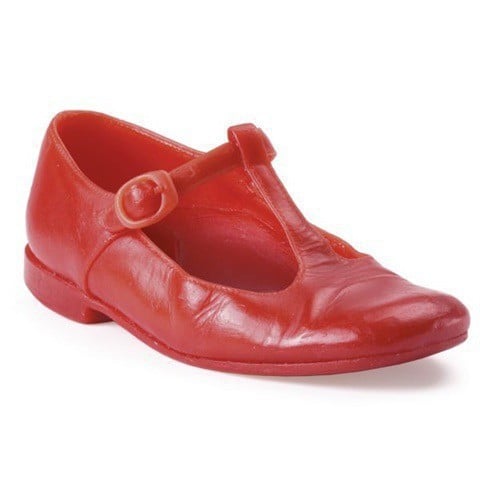Art & Exhibitions
MoMA’s Plot to Make Robert Gober a Household Name
In October MoMA will host the Surrealist artist's first US retrospective.

In October MoMA will host the Surrealist artist's first US retrospective.

Alexandra Peers


Robert Gober, Untitled (Red Shoe) (1990)
If Jeff Koons at the Whitney was the quintessential summer of 2014 show, Robert Gober at MoMA will represent this fall’s quintessential show.
The suburban Surrealist and the crown prince of cringe, both 59, couldn’t have less in common aesthetically: They differ totally in color palettes, in finishes, in materials, even in persona. Jeff Koons’s smiling, suited visage is well-known, even outside the art world. Few people, even inside the art world, know what Robert Gober looks like. He is a private man with a studiously low profile.
But on October 4, the first-ever US retrospective of the artist will open, curated by Ann Temkin, MoMA’s chief curator of painting and sculpture. All the eerie, vaguely menacing Gober classics will be there: the disembodied wax leg, the empty shoe, the tiny prison window, the gaping sink, the altered crib, the seemingly friendly, tree-dotted wallpaper that has a lynched man hanging amid the leaves. (Few artists can claim to be descended from both René Magritte and Joseph Beuys.) Quite large, it will feature about 130 works, some of which require running water, and some of which will be created specially for the show.
That October opening day seems around the corner to Temkin, racing around this week to customize the galleries for installation and taping the exhibition’s audioguide. (She confesses that, more than once, she paused before a Gober work and said, “Who knows what this means?”)
Putting together this show was different from others she’s curated, Temkin notes. On the one hand, “the works were all pretty difficult to get, they have fairly delicate surfaces,” made of such materials as wax or plaster. Such fragility made owners anxious about safeguarding the work. On the other hand, she adds, collectors of Gober works are “extremely loyal to him,” even if they don’t actually know the artist personally, she says. “They feel responsible to loan them.” Overall, Gober collectors, more so than, say, collectors of Damien Hirst, “feel they are in on a secret.”

Robert Gober, Untitled 1991.
Wood, beeswax, leather, fabric, and human hair. 13 1/4 x 16 1/2 x 46 1/8″ (33.6 x 41.9 x 117.2 cm)
The Museum of Modern Art, New York. Gift of Werner and Elaine Dannheisser
Background: Forest (1991), hand-painted silkscreen on paper
Image Credit: K. Ignatiadis, courtesy the artist and Matthew Marks Gallery © 2014 Robert Gober
MoMA’s audience may soon be clued into it. They’ll see a surprisingly cohesive 30-year body of work of incredible detail and complexity, says the curator: Over the decades, Gober has returned to the same feelings, topics (childhood, sexuality, America), and materials again and again. Temkin calls the resulting art “intentionally unnerving.”
The planning out of the show was a puzzle of many parts, she says: some of the works are large scale; some are sunk into the floor; and some incorporate running water. The show had to be installed on the second floor instead of the sixth floor’s special exhibition galleries, Temkin explains, because “if anything had gone wrong it would have been Picassos and Matisses directly underneath.”
Some of the show’s highlights come from the museum’s own collection. MoMA owns 28 Gobers according to its website, several of them given by the collectors Werner and Elaine Dannheisser. “The Dannheisser gift catapulted” the museum into being a major holder of Gober’s work, says Temkin.
The show will run concurrently with a likely blockbuster, “Henri Matisse: The Cut-Outs.” We’re wondering [what] will be the effect…if a lot of people—more of a general audience—will be exposed” to Gober’s works who might not otherwise have attended a Gober show,” says Temkin.
It will be an interesting fall.